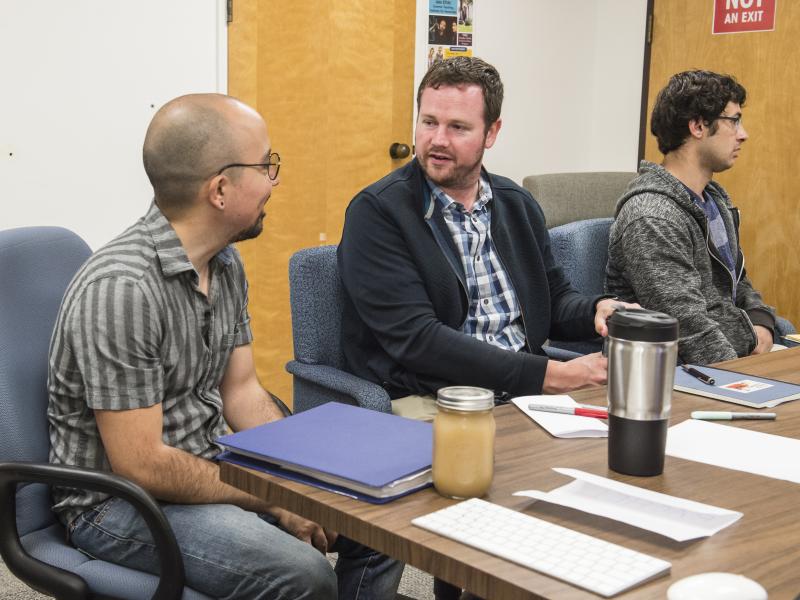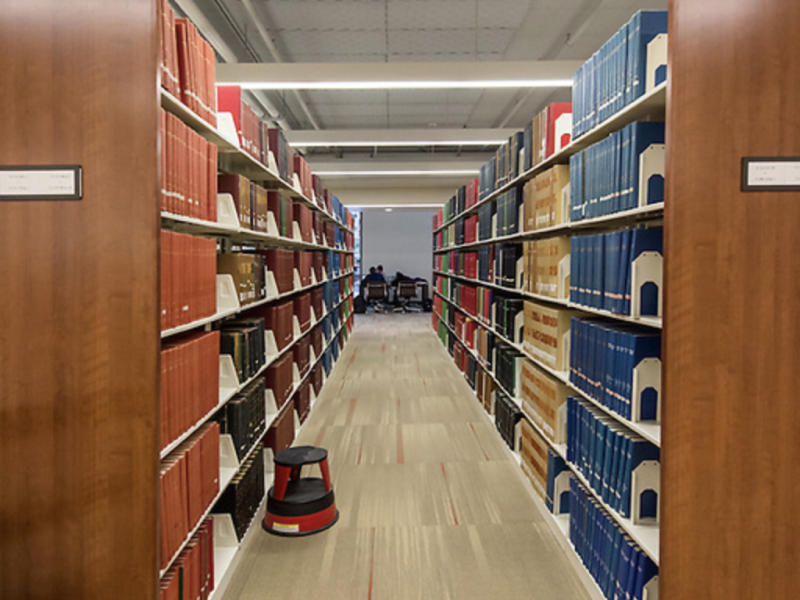You can use different sources of feedback to better understand students’ learning experiences in your course. Since no single type of feedback on teaching can provide a complete and accurate perspective, multiple sources of information should be used. Brookfield (1995) described four lenses that reflective teachers use: Self-reflection, Students, Peers, and Scholarship of Teaching and Learning.
Self-Reflection
Keep track of your teaching ideas and experiences real-time and at the end of the term.
- Document your teaching effectiveness: Keep a weekly teaching journal, or make notes on your lesson plans, with ideas about what to keep doing or change.
- Annotate your syllabi with notes on rationale, what worked, challenges and ideas for refinement during or immediately after a course is complete (don’t wait because you are likely to forget the details). See example here.
- Write a Teaching Statement demonstrating improved practices over time.
- Create a teaching portfolio that describes your teaching experiences and highlights innovations.

Student Surveys and Data
Use student feedback from introductory, mid-quarter, and course evaluation surveys and look for patterns of student performance on assignments for clues about where students are excelling and where you can offer more help.
- Mid-Quarter Feedback: MISSING CONTENT HERE?
- Course Evaluation surveys: Look at end-of-quarter student feedback on the course and instruction to inform future offerings of the course.
- Student performance data/analytics: Examine student performance on assessments to learn where the class (and its subpopulations) are struggling/excelling.
Learn what your students bring to your course (e.g. knowledge, interests) to inform your course planning and delivery. Introductory Surveys can be administered before class starts using this Google Form.
- Conduct a “needs assessment” to discover what your students already know about the subject, and what they expect to learn in your course.
- Promote inclusivity by asking students to identify their preferred pronouns, learning needs, expectations, interests, identities, and background experience.
- Identify potential obstacles to student learning such as language barriers or a lack of resources (WiFi, Laptop, etc.).
- Whether the survey is anonymous or not, using a questionnaire that only the instructor has access to may promote openness and honesty from students in a way that a public discussion cannot.
See Sample Introductory Survey questions in our Inclusive Teaching section.
Mid-quarter feedback allows you to respond to students’ real-time feedback about the course and make adjustments to enhance learning. This feedback can be collected during or outside of class, on paper or using an electronic survey such as the Canvas Mid-Quarter Feedback template or the Mid-Quarter Google Form template.
Why do a Mid-Quarter feedback survey?
- Student voices are heard and valued, and students become collaborators.
- You can improve your teaching by hearing how it’s landing with students.
- By inviting students to reflect on their own learning, you’re encouraging meta-cognition.
- By giving students the forum to let you know something they haven’t found the space to articulate yet, you can hear what students need, especially during times of high stress.
- You’re getting feedback in time to make adjustments before end-of-term course evaluations.
- Sample mid-quarter feedback questions.
When writing your feedback survey, consider:
- What questions will help you to improve the course, real time? Only ask questions about things you are willing and able to change.
- Are there particular aspects of the course that you’ve changed and want feedback on?
- How will you summarize and respond to students’ feedback, but keep it anonymous and confidential? (e.g. spend class time discussing, make a video, publish your responses on a forum.)
- How can you ensure a high survey response rate?
1. What platform will you use?
- Canvas Survey (a.k.a. Ungraded Quiz)
- Google Forms
- i>Clicker questions (during class)
- Printed survey or index cards on desks with questions projected
Note: all platforms except email can be anonymous; handwritten responses limit anonymity.
2. When will students take your survey?
- Introductory Survey: Either before classes officially starts or during the first week of class. Typically done outside of class.
- Mid-Quarter Feedback: Around week 4 of the quarter (just before the mid-way point), so that students are familiar with instruction, materials and assessments. Set aside class time or ask students to do it outside of class.
3. How will you follow up on the survey results with students?
- Debrief during class
- Email a follow-up reflection of responses
- Follow-up with individual students who have concerns or have identified potential obstacles to their learning (if non-anonymous)
UCSB’s course evaluation system provides instructors with feedback on students' experiences to inform future course design. Note: Instructors and TAs can add custom questions to their surveys during week 8 of a quarter; see “Step 2: Personalization period” The department coordinates with academic departments to determine what surveys will be used for each course, and notify them about any custom questionnaires. ID administers the Course Evaluation surveys online, with frequent, automatic, email reminders to students.
Importantly, research suggests that bias is pervasive in student evaluations of teaching, with female instructors and faculty of color rated less favorably than their colleagues (Anderson and Smith, 2005; Bavishi, et al., 2010; Basow, et al., 2013; MacNell, et al., 2015; Smith and Hawkins, 2011; Spooren, et al., 2015). To safeguard against bias in the hiring and personnel review process, it is imperative that you use multiple sources of evidence to compliment student evaluations.
Read more about Course Evaluation FAQs for Instructors and TAs.
You can examine student performance using technologies like Canvas analytics graphs, Canvas quiz statistics, GauchoCast viewing statistics, i>clicker data and GradeScope comment banks can help identify trends in student performance. GauchoSpace logs can be used to investigate how often students’ are accessing resources and participating in online activities, while GauchoCast analytics summarize students’ engagement with recorded lectures. Some questions you might try to answer using data and analytics are:
- What parts of the course are students excelling in and what are they finding challenging?
- Which course resources are students using most often?
- Are student learning outcomes equitable between different groups of learners?
Peer Feedback
Inviting a colleague or our Instructional Consultants at info@otl.ucsb.edu to review your course materials or observe your classroom teaching provides a new perspective that can spark new ideas, create space to talk through challenges, and reinforce your current teaching strengths. Peer feedback is most effective when it is used for formative feedback as part of teaching professional development (rather than summative/evaluative feedback).

Self or peer evaluators can use a “teaching inventory” to discover how teaching practices are reflected in the course artifacts: syllabus, GauchoSpace site, assessments, lesson plans and materials, and the like. Ideally, instructors or TAs identify specific aspects of their teaching that they would like their peer to focus on. Or you can use or adapt the sample teaching inventories below for a general inventory and for different teaching contexts.
Classroom observations offer a unique perspective on teaching and allow you to get feedback on your pedagogical innovations and challenges. Ideally, instructors or TAs identify specific aspects of their teaching that they would like the observer to focus on. The observer takes notes, or uses a classroom observation template, as they observe the instructor (in-person or recorded). The pair then meets to discuss the observations and reflect on what’s working well and ideas for improvement.
- Instructors: Request a classroom observation and consultation at with an Instructional Consultant at info@otl.ucsb.edu.
- Teaching Assistants: Request to have your class videotaped and schedule a consultation with a TA Pedagogical Advisor.
Research on Teaching and Learning
An extensive, peer-reviewed literature on effective teaching, called the “Scholarship of Teaching and Learning (SoTL)” explores effective teaching practices across disciplines in higher education. You can use and contribute to this research, apply ideas from teaching professional development, and analyze your own teaching experiences to discover “what works” in your teaching. An important part of SoTL is using evidence-based practices to enhance learning and teaching in a classroom, so it is important to take into account the research that has been done.
- Explore research literature on teaching and learning in Higher Ed (SoTL)
- Teaching innovations resulting from professional development (e.g. teaching seminars, workshops and conferences)

Anderson, K. J., & Smith, G. (2005). Students’ preconceptions of professors: Benefits and barriers according to ethnicity and gender. Hispanic Journal of Behavioral Sciences, 27(2), 184-201.
Basow, S., Codos, S., & Martin, J. (2013). The effects of professors' race and gender on student evaluations and performance. College Student Journal, 47(2), 352-363.
Bavishi, A., Madera, J. M., & Hebl, M. R. (2010). The effect of professor ethnicity and gender on student evaluations: Judged before met. Journal of Diversity in Higher Education, 3(4), 245.
Brookfield, S. (1995) Becoming a Critically Reflective Teacher. San Francisco: Jossey Bass.
MacNell, L., Driscoll, A., & Hunt, A. N. (2015). What’s in a name: Exposing gender bias in student ratings of teaching. Innovative Higher Education, 40(4), 291-303.
Smith, B. P., & Hawkins, B. (2011). Examining student evaluations of Black college faculty: Does race matter?. Journal of Negro Education, 80(2).
Spooren, P., Brockx, B., & Mortelmans, D. (2013). On the validity of student evaluation of teaching: The state of the art. Review of Educational Research, 83(4), 598-642